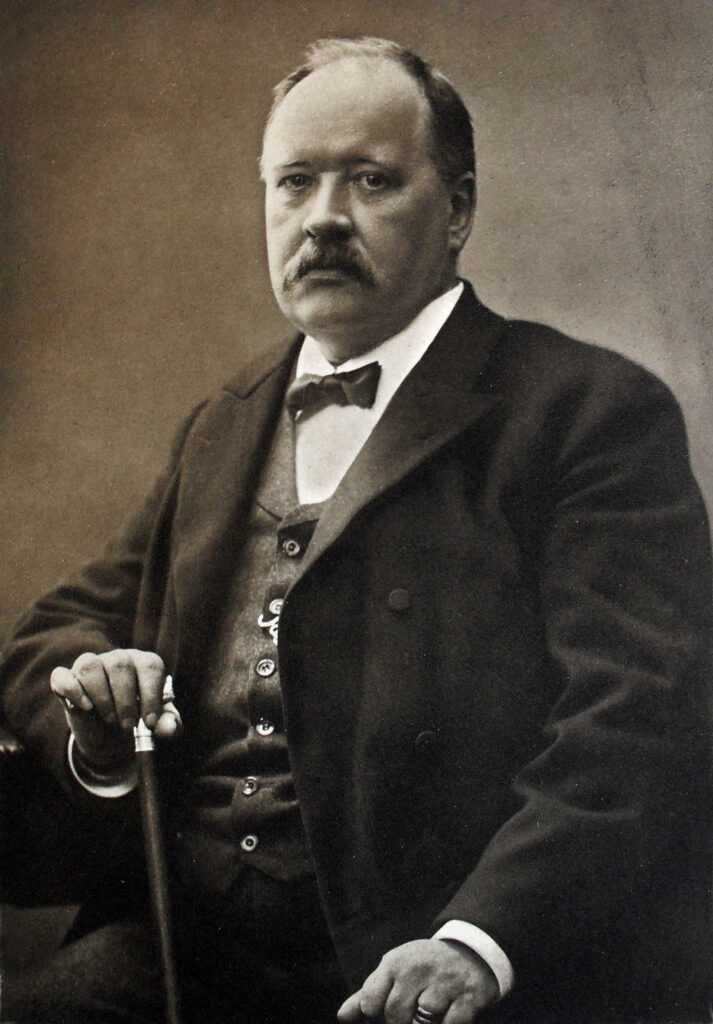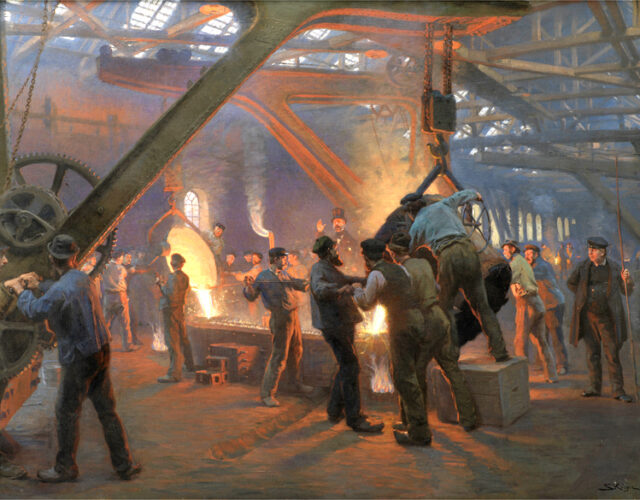In the late 19th century Svante Arrhenius, one of Sweden’s preeminent chemists, thought that what humans were doing on an increasingly large scale just might make his native land a little warmer. In the mid-1890s he set about completing the arduous calculations to prove his point.
Arrhenius did not approach this effort in an intellectual vacuum. Discoveries in geology, biology, physics, and chemistry were multiplying throughout the 18th and 19th centuries. Evidence of mass extinctions in the fossil record as well as geological evidence of glaciation led some scientists to propose the radical notion that multiple ice ages had occurred over the previous several hundred thousand years. Scientists suggested multiple theories to account for these ice ages—including shifts in Earth’s orbit, changes in the brightness of the sun, and even changes in the amount of carbon dioxide in the atmosphere.
Arrhenius knew that carbon dioxide (to him, carbonic acid) absorbs infrared radiation, felt by us as a form of heat. He also knew that the Industrial Revolution’s steam engine-powered locomotives, ships, and industrial looms burned coal—lots of coal—and that burning coal produces vast quantities of carbon dioxide.
What would be the result of significantly increasing or decreasing the atmospheric concentration of CO2, Arrhenius wondered? Could doubling its concentration in the atmosphere increase Earth’s surface temperature? How much of a decrease in its concentration would cause an ice age?

Today’s climate-change skeptics would have us believe that the whole notion of global warming is a relatively recent, half-baked idea dreamed up by a cabal of liberal scientists bent on destroying the U.S. economy. However, the roots of scientific thinking about Earth’s temperature are buried in the 19th century.
The first person to give voice to the notion that Earth’s atmosphere traps heat and warms the planet was the French mathematician Joseph Fourier, who in the early 19th century asked a seemingly simple question: What determines the temperature of the surface of Earth? His calculations suggested that given the balance of incoming energy from the sun and outgoing energy (in infrared form) from the surface of Earth, the temperature should be much colder, well below freezing in fact. (Today climate scientists agree that Earth’s average temperature would be about 0°F without the presence of greenhouse gases in the atmosphere. Our actual average surface temperature is about 57°F.)
Fourier didn’t know how the atmosphere trapped infrared radiation. In 1838 the French physicist Claude Pouillet speculated that water vapor and carbon dioxide could account for the phenomenon, but there was no experimental proof that these gases absorbed heat. In 1859 John Tyndall, a professor of natural philosophy at London’s Royal Institution and a keen mountaineer, decided to test whether gases in the atmosphere could trap heat. Working in the Royal Institution laboratories, Tyndall developed an elaborate instrumental setup to measure the amount of radiant heat different gases absorbed. His work demonstrated that while oxygen, nitrogen, and hydrogen were transparent to infrared radiation, water vapor, CO2, and methane absorbed such radiation.
Tyndall realized that water vapor is the primary greenhouse gas in the atmosphere and is largely responsible for the effect Fourier had calculated in 1824. As an alpine mountaineer, Tyndall had developed an intense interest in glaciers, which he and other scientists thought to be remnants of the vast ice sheets that covered large parts of Europe and North America during the last global ice age. What caused these huge changes in Earth’s climate? Could fluctuations in the level of greenhouse gases be responsible? In a public lecture in 1863 Tyndall proclaimed,
So if water vapor is the dominant greenhouse gas on Earth, why was Arrhenius so interested in carbon dioxide? Earth is a watery planet, and Arrhenius, like other scientists, recognized that water vapor cycles in and out of the atmosphere and oceans in a matter of days and that its concentration in the atmosphere depends on the temperature. Carbon dioxide, by contrast, is not influenced by weather and persists in the atmosphere for centuries. Increasing or decreasing CO2 would change Earth’s temperature, which would in turn affect the amount of water vapor in the atmosphere, thus affecting the temperature. This cycle turns CO2 into a control knob on Earth’s thermostat.
Arrhenius focused, like Tyndall, on the causes of ice ages, and his calculations showed that a significant decrease in atmospheric CO2 could trigger an ice age. He also calculated that a doubling of atmospheric CO2 could cause an increase in Earth’s surface temperature of 11°F to 14.5°F. Making these calculations was exceedingly tedious and required months of effort, but this concentrated dullness may have been for the best. At the time, Arrhenius was suffering from depression, brought on by a brief unhappy marriage and subsequent divorce.
He published his research in 1896 in the London, Edinburgh, and Dublin Philosophical Magazine and Journal of Science. Given the rudimentary tools at his disposal—pencil and paper—Arrhenius’s calculation is remarkably close to the 5.5°F to 9°F increase in surface temperature current models suggest for a doubling of CO2.
Being the native of a nation with a cold climate, Arrhenius was not troubled by such a possibility. In 1908 he published a popular book, Worlds in the Making, in which he assured readers that by increasing CO2 “we may hope to enjoy ages with more equable and better climates, especially as regards the colder regions of the earth, ages when the earth will bring forth much more abundant crops than at present, for the benefit of rapidly propagating mankind.”
Though Arrenhius’s book was translated into English as well as several other languages, his work on climate was pretty much forgotten for more than half a century, largely because most people, including scientists, did not believe that any human activity could have an impact on a system as vast as Earth’s climate. After the middle of the 20th century, when scientists began to measure the concentration of CO2 in the atmosphere, they saw that CO2 levels were inexorably increasing year after year. Suddenly, Arrenhius’s idea that humans could make Sweden warmer seemed prophetic.




